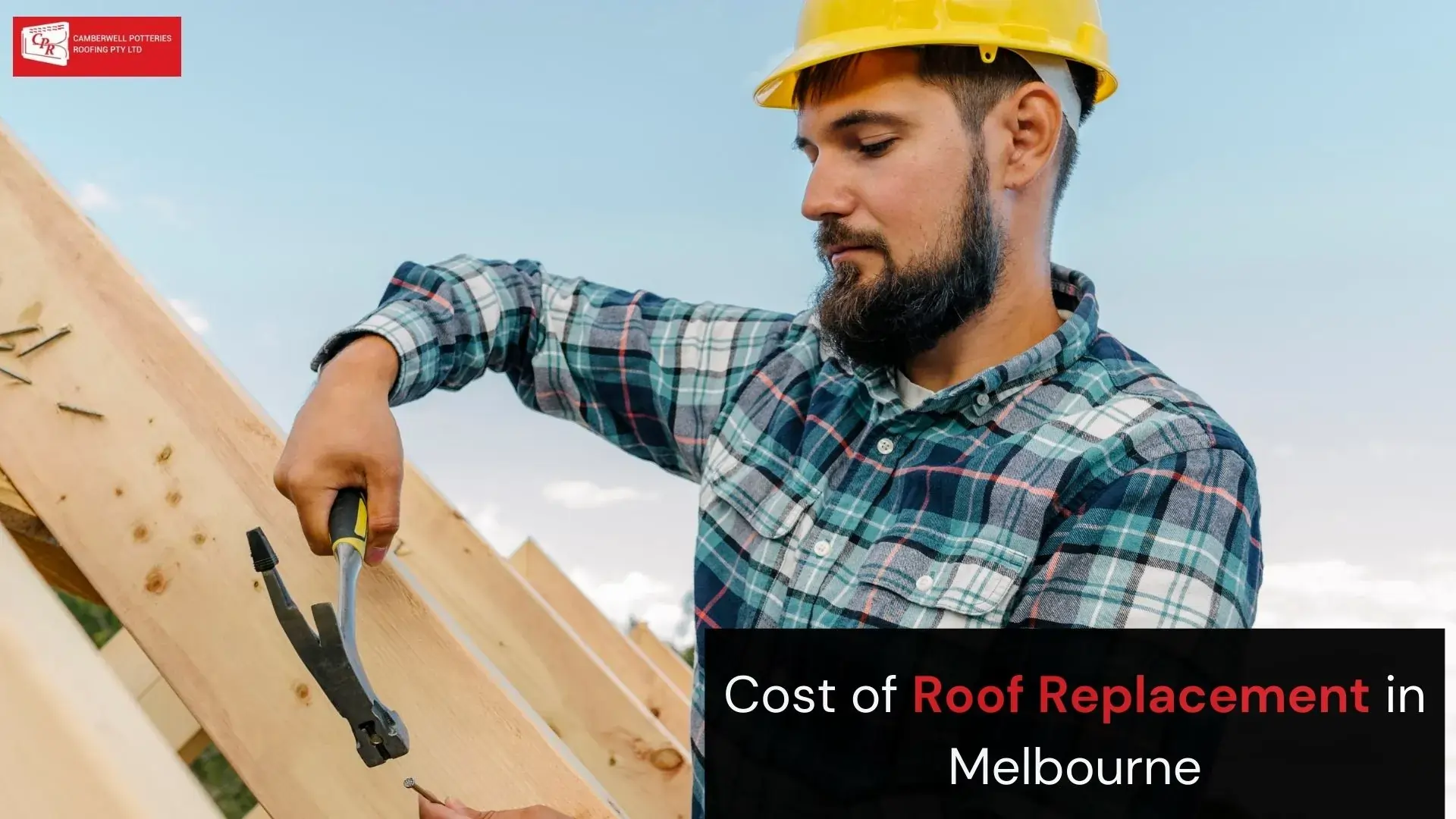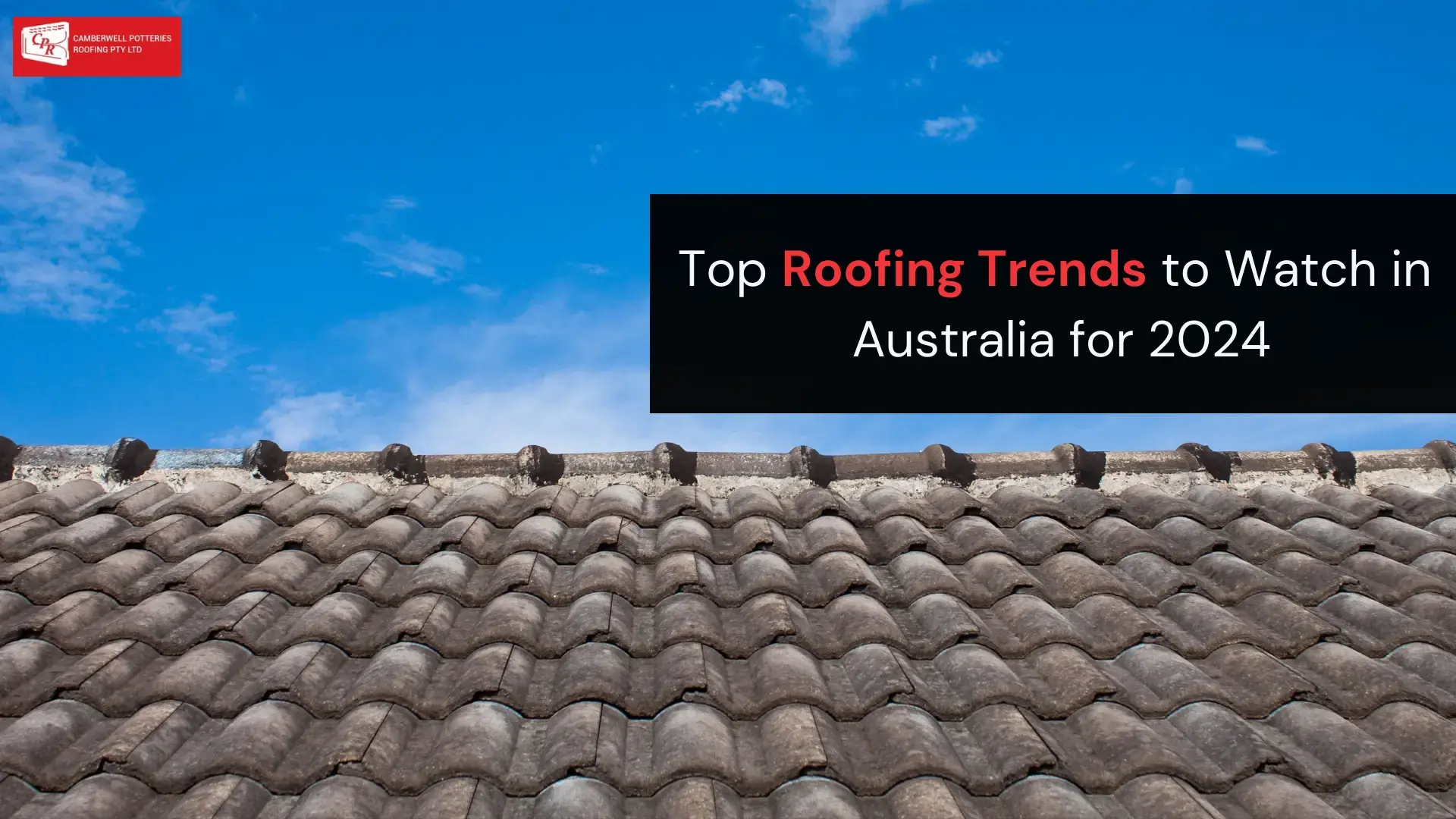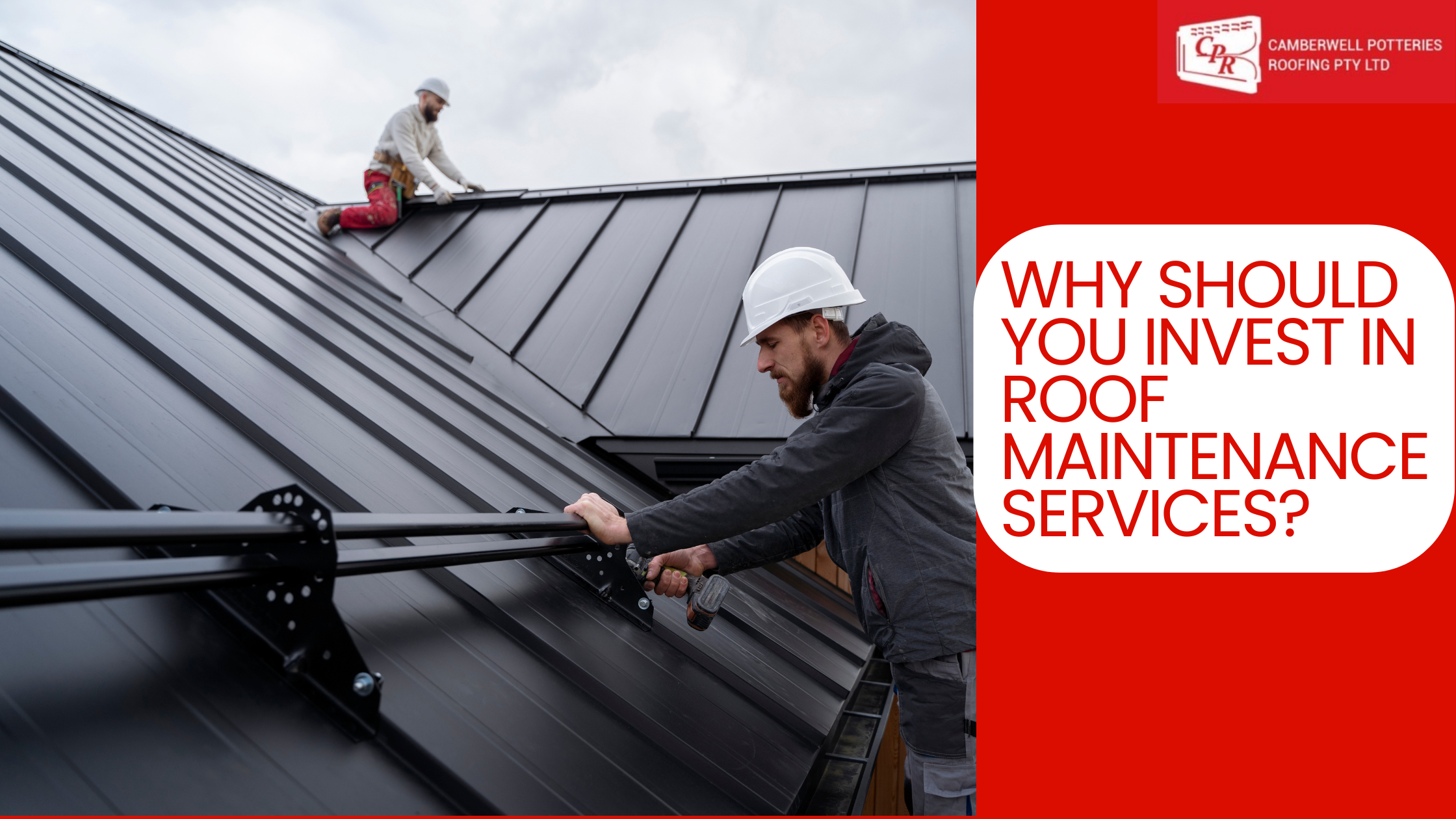Cost of Roof Replacement in Melbourne
Roofs can degrade over time. The degradation can be a result of weather exposure, age and other circumstances. Ultimately you’ll need to contact a roof replacement Melbourne specialist to get it replaced.
Changing your roof is a big home improvement project. Therefore you need to think through well in terms of cost and material options.
It is vital to understand the costs involved and which materials are best for making an informed decision. And that’s what today’s blog is about!
Factors Affecting Cost Of Roof Replacement Melbourne
Understanding these factors is crucial for Melbourne homeowners who want to plan their budgets well. Below are the main factors determining the price of a new roof:
Roof Size
The size of a roof is the number one determinant of what its replacement will cost. Larger roofs will require greater materials and labour. Thus, the overall expense for roof replacement Melbourne will be more.
Roofs are typically measured in square feet or squares. One square is equivalent to 100 square ft.
- Small Roofs: Smaller roofs may have lower material costs. However, the fixed labour cost and material expense might still be higher per square foot.
- Large Roofs: Bigger roofs benefit from economies of scale, lowering their per-square-foot charges. However, due to increased material and labour requirements, its overall expense will be higher still. Connect with a roofing specialist Melbourne to get a free quote for your home’s roof replacement.
Roof Pitch
Roof pitch is another factor that significantly impacts on the cost of replacing it. Steeper roofs take more time to work on, hence higher labour charges.
- Low-Slope Roofs: Such roofs are more straightforward when working on them, thereby attracting lower labour rates.
- High-Slope Roofs: These require additional safety measures, specialised equipment, and greater completion times thus pushing up labour expenses charged by roofers Melbourne.
Material Choice
The choice of roofing material affects the roof replacement price. Various products differ in prices per square feet hence determining their collective amounts upon purchase.
- Concrete Tiles: Generally less expensive than clay tiles, costing an average $10 to $20 per square foot inclusive of materials and labour.
- Clay Tiles: They are more expensive, going for $15 to $30 per square foot, but have longer lifespan and aesthetic appeal.
Labour Costs
Labour costs will widely vary depending on the location, job complexity and quality of the reroofing contractors.
- Location: Labour rates differ in different regions due to differences in the cost of living as well as local market conditions.
- Complexity: Roofs that are heavily designed with multiple slopes or other characteristics, such as skylights and chimneys, require more time and expertise, thus driving up labour expenses.
- Contractor Experience: While this might be costly, hiring an experienced and reputable re-roofing Melbourne contractor ensures good workmanship and long-term reliability.
Removal of Old Roof
The process of removing the current roof can add to your overall costs. This involves paying workers to tear off old roofing materials, disposing of debris and preparing the surface for a new roof.
- Single Layer Removal: Taking off one layer of old roofing material during re roofing Melbourne is less expensive and faster to remove.
- Multiple Layer Removal: Removing several layers of old roofing makes it more labourious resulting in additional costs incurred during removal process.
Roof Accessibility
If the workers can easily get onto your roof, you may need to pay less money for a replacement or roofing restoration Melbourne than if it was difficult to access. Hard-to-reach heights demand more intensity while replacing them, thus raising the cost implications in terms of labour charges.
- Easy Access: These are roofs that can be accessed without any challenges implying minimal obstacles around the house are involved which result in lower labour rates.
- Access problems: Roofs with difficult access, such as those surrounded by trees or other buildings, or roofs with complex designs, are more costly to replace.
Additional Features
Being one of the most crucial aspects of a roof replacement or roofing restoration Melbourne project, additional features like skylights, chimneys and roof vents affect its cost and complexity.
- Skylights: A flawlessly integrated seal is needed when installing skylights or working around them for new roofing.
- Chimneys: Flashing around chimneys has to be carefully done to prevent leakage that would increase labour costs.
- Solar Roof Vents: Correct ventilation is vital and this means that installation or replacement of the roof vent will require additional materials and an increased workforce.
Permits and Inspections
A number of areas require permits and inspections for roof replacements. These permits ensure that work adheres to local building codes as well as safety standards.
- Permits: The exact cost of getting permits may vary depending on the locality as well as the scope of the job. It is, therefore, necessary for homeowners to call their local building divisions before commencing any work. You can connect with roofers Melbourne to understand the applicable building codes.
- Inspections: Before, during, and after replacing a roof, inspections might be necessary so that these can comply with regulations. Normally, inspection fees add up to the overall cost.
Seasonal Considerations
The season when roof replacement takes place also affects costs associated with this process. Roofing specialists Melbourne usually charge less during off-peak seasons but may charge premium prices during rush periods.
- Peak Season: Spring and summer are peak roofing seasons due to favourable weather conditions, which can lead to higher demand and increased costs.
- Off-Peak Season: Fall through winter months may experience reduced rates, but bad weather sometimes disrupts schedules or delays completion dates.
Best Roof Replacement Options For Melbourne
Concrete Tiles
Costs of installation of concrete tiles can be different depending on above mentioned factors. Concrete tile roofs usually cost homeowners between $10 and $20 per square foot on average.
The coat consists of worker fees and materials prices. In the case of a 2k sq ft roof, this translates to a total price range of $20000-$40000.
Clay Tiles
The timeless beauty and long lifespan of clay tiles have made them an ideal choice over centuries. In general terms, clay tiles have a higher installation cost compared to concrete tiles.
On average, homeowners should budget between $15 and 30 per square foot in total costs, including labour expenses, to install clay tile roofs.
Thus, this puts the entire cost of a 2000-square-foot-roof at around $30,000-$60-000.
Wrapping Up
Replacing a roof is a significant investment. However, choosing the right material can offer long-term benefits in terms of toughness, appearance, and energy-saving potential. Both concrete and clay tiles make great choices for re roofing Melbourne. At Camberwell Roofing, we offer re-roofing and new roof installation services. Contact us today to get a free quote.
Top Roofing Trends to Watch in Australia for 2024
Australia’s roofing industry is changing completely. Roofing trends are now being influenced by technology, sustainable activities, and design.
So, if you want to employ a roofing expert Melbourne but would like to be conversant with the latest roofing industry trends; you are at the right place.
This blog post discusses the key Australian market influencer roofs by 2024.
Roofing Trends Homeowners Should Know Before Installing a New Roof
Eco-Friendly Roofing Materials
The year 2024 is all about sustainability. Therefore environmentally sustainable roofing materials are now gaining popularity. These green alternatives would help reduce carbon footprint.
Sustainable Materials: Terracotta or concrete roofs have been popular as sustainable choices for use in roofing. These structures are long-lasting. Subsequently, you will not need to make any major adjustments soon after a new roof installation.
Cool Roofs: Cool roofs tend to deflect most solar rays away from the building’s surface. It also absorbs less heat compared to other normal roofs in the market. Cool roof technology incorporate reflective material or use paint containing reflective pigments. Consequently, they keep interior spaces cooler. Cool roofs lower demand for air conditioning services.
Integration of Solar Roofing
Solar roofing is another growing trend in Australia’s market during this period. With the cost of solar panels dropping and increased efficiency in solar technology, homeowners can now integrate solar panels or solar vents during new roof installation.
Integrated Solar Panels: Instead of putting solar panels on top of your roof like most people do, integrated solar panels replace some sections of the roof so that it function both as a roof and a source of renewable energy.
Solar Vents: These vents run on solar energy, unlike traditional vents. So they’re energy-efficient and also ensure proper air circulation within your attic. Consult your roofing specialist Melbourne to get a solar vent installed during roof restoration or new roof installation.
Smart Roofing Technologies
A roof is a major part of a house, and if it can be made smart, that would be amazing for the homeowners. And 2024 is seeing smart technologies getting integrated into the roofs. This is mainly due to the higher availability of such technology.
- Roof Monitoring Systems: These systems have sensors and IoT (Internet of Things) technology. They provide real-time feedback on the condition of the roof. They can also detect leaks, monitor temperatures, and check humidity levels. This will help you determine whether repairing damages will be enough or if you need a new roof Melbourne.
- Automated Ventilation: These systems are designed to optimize airflow and temperature control through attics and roof spaces. Such a provision can be made remotely through apps hence, one can change their ventilation settings according to weather conditions.
Aesthetic Roofing Designs
Homeowners today want something that will improve the overall appearance of their homes when it comes to aesthetics.
- Clay and Concrete Tiles: Clay and Concrete tiles offer timeless appeal. These tiles come in different shapes, colours, and finishes, making them compatible with many architectural designs, ranging from traditional to contemporary ones. So, if you’re getting a new roof Melbourne, connect with your roofing expert to find the best material for your roof.
- Flat and Low-Slope Roofs: As contemporary housing trends continue developing, flat and low-slope roofs are getting popular. These roofs usually have a clean and minimalist look while, at the same time, they may be used for creating outdoor living spaces like rooftop gardens and terraces. Consider these styles during roof replacement Melbourne.
Resilient And Weather-Resistant Roofing
There are diverse climatic zones in Australia, from tropical to arid regions. Consequently, roofing materials should be able to endure extreme weather conditions. By 2024, demand for sustainable and climate-resilient roofs will skyrocket.
Impact-resistant Roof Tiles: These roof tiles can survive any type of hailstorm, heavy gusts of wind, or debris. These properties makes them most useful in areas having harsh weather conditions. Contact your roofing company Melbourne for good-quality resilient tiles.
Waterproof Membranes: Waterproof membranes prevent water infiltration while protecting roofs. Innovation in membrane technology has resulted in variations in waterproof membranes. These can now be used even in flat or low-slope roofs.
Fire-Resistant Roofing Materials: These roofing materials are essential in bushfire prone areas. Clay tiles and concrete tiles offer a good level of fire resistance. Fire-resistance is an important factor to discuss with your roofers Melbourne.
Energy-Efficient Insulation
Insulation is one effective approach towards ensuring an energy-efficient roof. In 2024, innovations in insulation materials and installation techniques are improving the thermal performance of roofs.
Spray Foam Insulation: Its popularity is increasing because of its better insulation and capacity for sealing the whole house. In this method, spray insulation is applied directly on the underside of your roof to cut down heat transfer. Spray insulation done during roof replacement Melbourne keeps your room comfortable during colder seasons and cooler during hot spells.
Reflective Insulation: Radiant barriers are used on the roof to bounce off heat. It works well in places with hot climates because it cools the house and reduces reliance on air conditioners.
Professionals from a roofing company Melbourne, can suggest the best insulation for your roof.
Green Building Certifications
Green Building Certifications have become increasingly popular within the roofing industry. These include LEED and Green Star ratings.
Homeowners and builders desire to have certified roofs that meet specific standards for sustainability and energy efficiency.
- New buildings are required to meet certain criteria pertaining to energy consumption, materials used as well as environmental impact before they can be LEED-certified. Roofs play an essential role in enhancing energy efficiencies, thereby achieving LEED certification.
- Green Star-Rated Roofing: An Australian ranking method that assesses buildings’ environmental performance is called Green Star. They contribute to a building’s overall sustainability score. For example, this may include green roofs/solar panels or rainwater harvesting systems.
Conclusion
This blog identifies some of the roofing trends in Australia by 2024. Sustainability, energy efficiency, and resilience are some of the roofing trends most preferred in 2024.
They are likely to shape the future of Australia’s roofing industry because they encompass smart technologies, aesthetic designs as well as sustainable materials including solar roofs.
We provide reroofing and new roof installation services at Camberwell Roofing that are up-to-date with the latest advancements. Connect with our roofers Melbourne to incorporate these trends into your roof.
Homeowners and builders who adopt such innovations will not only improve their roofs’ functionality and look but also promote a sustainable and resilient built environment.






